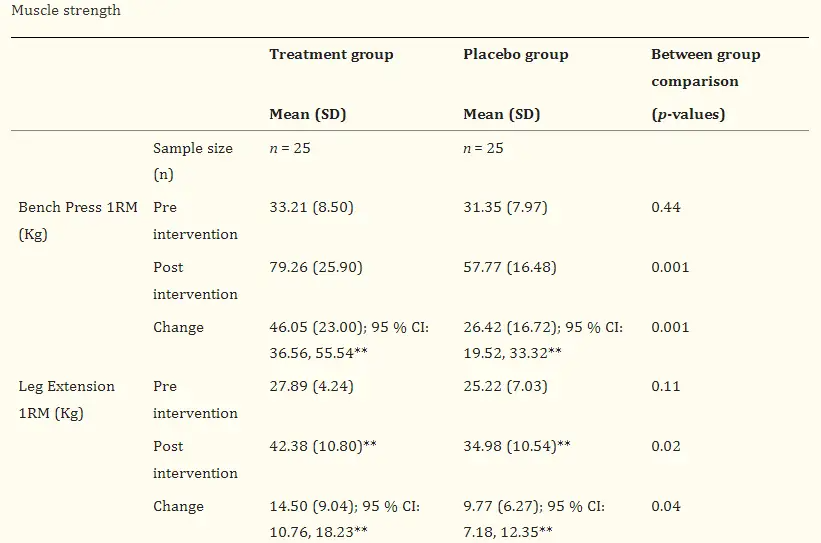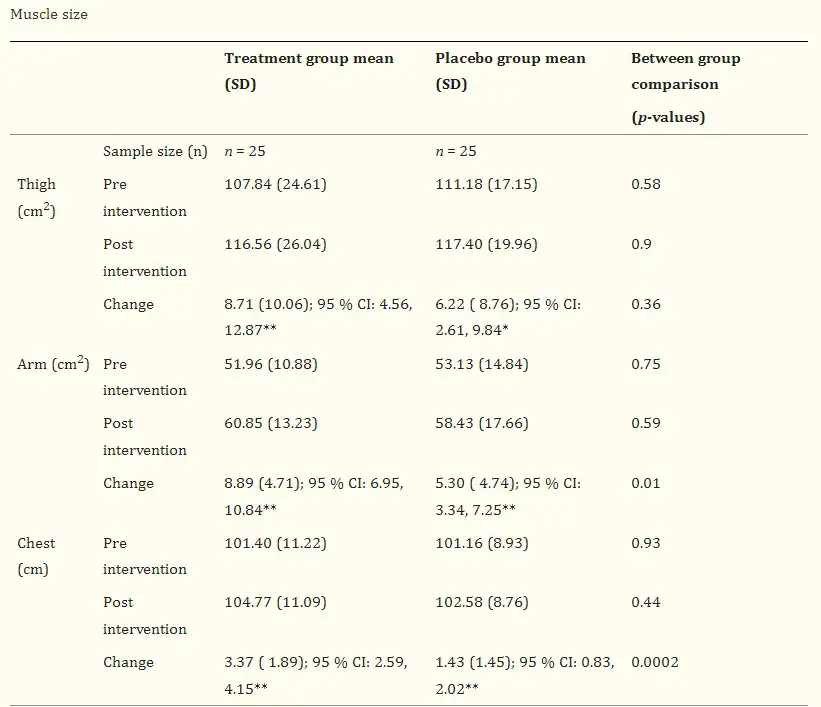Ashwagandha vs Shilajit on testosterone, muscle, mood, energy levels, fertility, etc.
Both are used in Ayurvedic medicine for thousands of years and both have great benefits for men.
In this article, I will do a side-by-side comparison of these two herbs.
What I’ll be covering
- Ashwagandha vs Shilajit on Testosterone Levels
- Ashwagandha vs Shilajit on Male Fertility
- Ashwagandha vs Shilajit on Cortisol
- Ashwagandha vs Shilajit on Lean muscle mass & muscle strength
- Ashwagandha vs Shilajit on Exercise Performance
- Ashwagandha vs Shilajit on Mood and Brain Function
- Dosing
- Recommended supplements
- Summary: Shilajit vs Ashwagandha
- Top 10 most important fundamentals for high testosterone
Quick background on Shilajit

Shilajit is a herbomineral compound that is pale brown to blackish-brown and is composed of a gummy exudate that oozes from the rocks of the Himalayan mountains in the summer months.
It contains humic acid, organic plant matter, and fulvic acid as the main carrier molecules.
Benefits of Shilajit include taking part in the transportation of nutrients into deep tissues and helping to overcome tiredness, lethargy, and chronic fatigue. Shilajit resin also improves the ability to handle high-altitude stresses, strengthens the immune system and protects against aspirin-induced gut damage (R).
Shilajit is a Sanskrit word meaning “Conqueror of mountains and destroyer of weakness” and ‘Winner of rock’.
Who doesn’t want to supplement something that is a destroyer of weakness?
Quick background on Ashwagandha

Ashwagandha (aka withania somnifera aka Indian Ginseng) has been said to give you the power of a horse.
It’s an evergreen shrub of the nightshade family that grows in India, the Middle East, and parts of Africa.
A few benefits of Ashwagandha include strengthening the immune system, calming the nervous system, balancing blood sugar levels, having strong anti-inflammatory properties (as it contains powerful antioxidants), improving sexual performance, etc.
There are different kinds of Ashwagandha extracts containing different amounts of withanolides (one of the active ingredients). The most common is the KSM-66 extract which contains 5% withanolides. Sensoril contains 11% and Shoden contains 35%. That’s overkill IMO.
Ashwagandha vs Shilajit on Testosterone Levels

Ashwagandha on testosterone production
Ashwagandha is fairly well known for its ability to increase testosterone. It’s usually the first recommendation when someone wants to optimize their testosterone naturally.
The “normal” range for testosterone is usually around 350 to 1000ng/dl. The range is shrinking year after year; some ranges are between 300 and 600ng/dl, which is crazy.
Here are 4 studies showing the effectiveness of Ashwagandha on testosterone.
1) 600mg of Ashwagandha (providing 21 mg of withanolide glycosides a day) in overweight men aged 40–70 years, with mild fatigue, increase salivary DHEA-S by 18% and testosterone by 14.7% (R). 14.7% might seem like a good deal, but if you look at the actual numbers, it’s only from 332 to 378pmol/L.
2) 300mg twice daily of KSM-66 extract increased testosterone from 402 to 475ng/dl in healthy males aged between 21 and 45 years (R).
3) 300mg twice daily of KSM-66 extract increased testosterone from 630 to 727ng/dl after 8 weeks in resistance training beginners (R). That’s a 96ng/dl increase.
4) 225 mg of a high-concentration full-spectrum root extract x3 daily increased testosterone by 17% (from 445 to 522ng/dL; 77ng/dl increase) and LH by 34% (from 3.97 to 5.31mIU/mL) in 40 infertile men after 12 weeks (R).

In summary, you can expect a testosterone increase between 70-100ng/dl on average from taking 600mg KSM-66 extract daily. It’s equally effective for men with low and normal testosterone, overweight and healthy men.
70-100ng/dl might seem like a small jump, but since stress levels also go down, you’ll definitely feel a big difference.
Shilajit on testosterone
There are 2 studies showing that Shilajit can increase testosterone.
200 to 500mg shilajit daily has been shown to increase testosterone by 100-125ng/dl and free testosterone (19.14%) on average (R, R). It also increased DHEA by 31.35% after 90 days at 500mg daily. DHEA preferably converts to androsterone and then to DHT; our most potent androgen.
> Shilajit on testosterone, dopamine and sexual function
Ashwagandha vs Shilajit on Male Fertility

Male infertility accounts for about 50% of human infertility (R). There are many reasons for infertility, namely low testosterone, nutritional deficiencies, stress, toxin buildup, etc.
Ashwagandha on fertility
In this study, 46 men with low sperm count (oligospermia; sperm count < 20 million/mL semen) were given 675 mg/day (225 mg KSM-66 x3 daily) of Ashwagandha for 90 days (R).
After 90 days:
- Sperm count increased by 167% (9.59 ± 4.37 × 106/mL to 25.61 ± 8.6 × 106/mL),
- Semen volume increased by 53% (1.74 ± 0.58 mL to 2.76 ± 0.60 mL)
- Sperm motility increased by 57% (18.62 ± 6.11% to 29.19 ± 6.31%).
A few of the mechanisms how Ashwagandha improves fertility are by:
- Increasing blood flow to the reproductive organs
- Protecting the reproductive organs from damage caused by toxins and free radicals
- Reducing cortisol levels and stress
- Increasing testosterone and DHEA
- Improving sleep quality
Shilajit on fertility
Shilajit administration in humans is quite effective at improving fertility by reducing infection in the testes (reducing pus cells and infected sperm) as well as oxidative stress in the testes (R).
Just 100mg Shilajit was able to (R):
- Improve sperm production by 37.6%
- Increase total sperm count by 61.4%
- Improve motility by 12.4-17.4%
- Increase normal sperm count by 18.9%
- Decrease semen MDA (a marker of oxidative stress) content by 18.7%
Shilajit also protects the testes against toxins such as cadmium, thus preventing a drop in fertility and testosterone (R).
Ashwagandha vs Shilajit on Cortisol

Stress is a normal and natural reaction to a perceived dangerous situation.
Stress can be either acute or chronic.
Acute stress temporarily impacts you negatively, but the body is able to recover quickly. Hormetic stressors that make us stronger include exercise, cold exposure, sauna, etc.
On the other hand, chronic stress or long-time persistent stress can induce negative health consequences when it’s bigger than our adaptive capacities. This can lead to health issues such as metabolic syndromes, obsessive-compulsive disorder (OCD), generalized anxiety disorder (GAD), severe cardiovascular issues, hypertension, endocrinological issues, and visceral obesity (R).
Adaptogens help us cope with (perceived) stress so that stressors don’t affect us negatively.
A recent definition of an adaptogen is, “a … class of metabolic regulators which increase the ability of an organism to adapt to environmental factors and avoid damage from such factors.”
Ideally, an adaptogen should: a) decrease stress-induced damage, b) be safe and produce a beneficial effect even if the number of administrations is more than required, c) be devoid of any negative effects such as withdrawal syndromes and d) not influence the normal body functions more than necessary.
Both Ashwagandha and Shilajit are great adaptogens.
Ashwagandha on cortisol
Ashwagandha is a powerful adaptogen that possesses all of the characteristics listed above.
In this study, 250mg and 600mg of Ashwagandha were great at lowering cortisol and perceived stress (R). You can see how cortisol dropped from 16.2 to 10.86 after 8 weeks of use; a 5.34 drop.

This 2012 study showed that 600mg KSM-66 dramatically reduced perceived stress, as well as a reduction in depression and anxiety scores (R). It decreased cortisol from 20.6 to 11.5. A 9.1 point (44%) decrease.

In the graph below you can see how potent Ashwagandha is. PSS (perceived stress score), GHQ-28 (General Health Questionnaire), DASS (Depression Anxiety Stress Scale) and cortisol all significantly changed more that the placebo group (R).

Additionally, stress frequently causes stomach ulcers. Ashwagandha has been shown to reduce this from happening.
Shilajit on cortisol
Shilajit increases energy in rats with chronic fatigue syndrome by lowering cortisol, preventing adrenal shrinkage and preservation of mitochondrial function and integrity (preventing mitochondrial dysfunction by stabilizing the complex mitochondrial enzymes) (R).
Ashwagandha vs Shilajit on Lean muscle mass & muscle strength

Ashwagandha on lean mass and strength
300mg x2 daily of the KSM-66 extract was able to significantly boost muscle strength and muscle growth in healthy male subjects (18–50 years old) new to weight lifting (R).


Not many studies have looked at the effects of Ashwagandha on muscle mass, but quite a few have looked at muscle strength. In terms of muscle strength, Ashwagandha is nearly always better compared to placebo.
Shilajit on lean mass and strength
Shilajit hasn’t been studied for its effect on muscle mass yet, but it does help to prevent a drop in muscle strength on a fatiguing exercise protocol (R).
Ashwagandha vs Shilajit on Exercise Performance

Ashwagandha
Ashwagandha at 300mg x2 daily has been shown to enhance cardiorespiratory endurance (R).
A 2020 meta-analysis found that Ashwagandha can improve VO2 max, but more studies are needed (R).
Shilajit
Shilajit can help to increase/preserve energy and mitochondrial function due to prolonged stress (or overtraining) (R).
Shilajit has been shown to have a variety of beneficial effects when it comes to exercise, especially slight overtraining (R).
500mg/day of PrimaVie® Shilajit supplementation over 8 weeks resulted in a reduction in fatigue and a drop in strength.
“The results of the present study demonstrated that 8 weeks of PrimaVie® Shilajit supplementation at 500 mg·d− 1 promoted the retention of maximal muscular strength following the fatiguing protocol and decreased baseline HYP. Thus, PrimaVie® Shilajit supplementation at 500 mg·d− 1 elicited favorable muscle and connective tissue adaptations.” (R)
Ashwagandha vs Shilajit on Mood and Brain Function

Ashwagandha
Ashwagandha increases dopamine, GABA, DHEA-S, serotonin, thyroid hormones and testosterone, while lowering cortisol and oxidative stress in the brain, all of which will have a positive effect on your mood, mental health and sexual health (R).
Ashwagandha has been shown by many studies to improve overall mental well-being and cognitive health, especially during stressful peroids.
Shilajit
Shilajit has been shown to have anti-anxiety and nootropic effects, partly due to its ability to improve mitochondrial function and increase dopamine and GABA signaling (R, R).
It’s even helpful against traumatic brain injury since it prevents brain swelling, intracranial pressure and disruption of the blood-brain barrier (R)
When I used shilajit, I noticed that it was a good energy booster. It gave me clean energy.
Dosing
The standard dosing includes:
- 600mg KSM-66 or full-spectrum extract of Ashwagandha (300mg x2 daily). You can take the first dose right after waking and the second dose with dinner or right before bed.
- 500mg Shilajit (250mg x2 daily; same timing as Ashwagandha). Higher doses can be taken, but 500mg is effective enough.

Recommended supplements
Senosril extract from Nootropics depot (contains 11% withanolides, compared to 5% from KSM-66; thus the dose can be lower.)
PrimaVie from Nootropics depot (take 2 caps daily)
Summary: Shilajit vs Ashwagandha
Shilajit & Ashwagandha have numerous health benefits and can be taken together as they will have unique and complimentary benefits.
Shilajit can help to boost your testosterone and dopamine, which can help with sexual desire, building muscle, recovering faster, tolerating stress better, improving your energy, etc.
Ashwagandha can do the same and together they can supercharge you.
I’ve used both with good results and will definitely be using them in the future.
One interesting experience with Ashwagandha is that when you take it before sex, it can make you orgasm faster due to enhance sensitivity. So just be on the lookout for that. However, after chronic use, it should be able to help with premature ejaculation.
Top 10 most important fundamentals for high testosterone

>1000ng/dl Testosterone: My Step-by-Step Guide on How I Do It Naturally!

